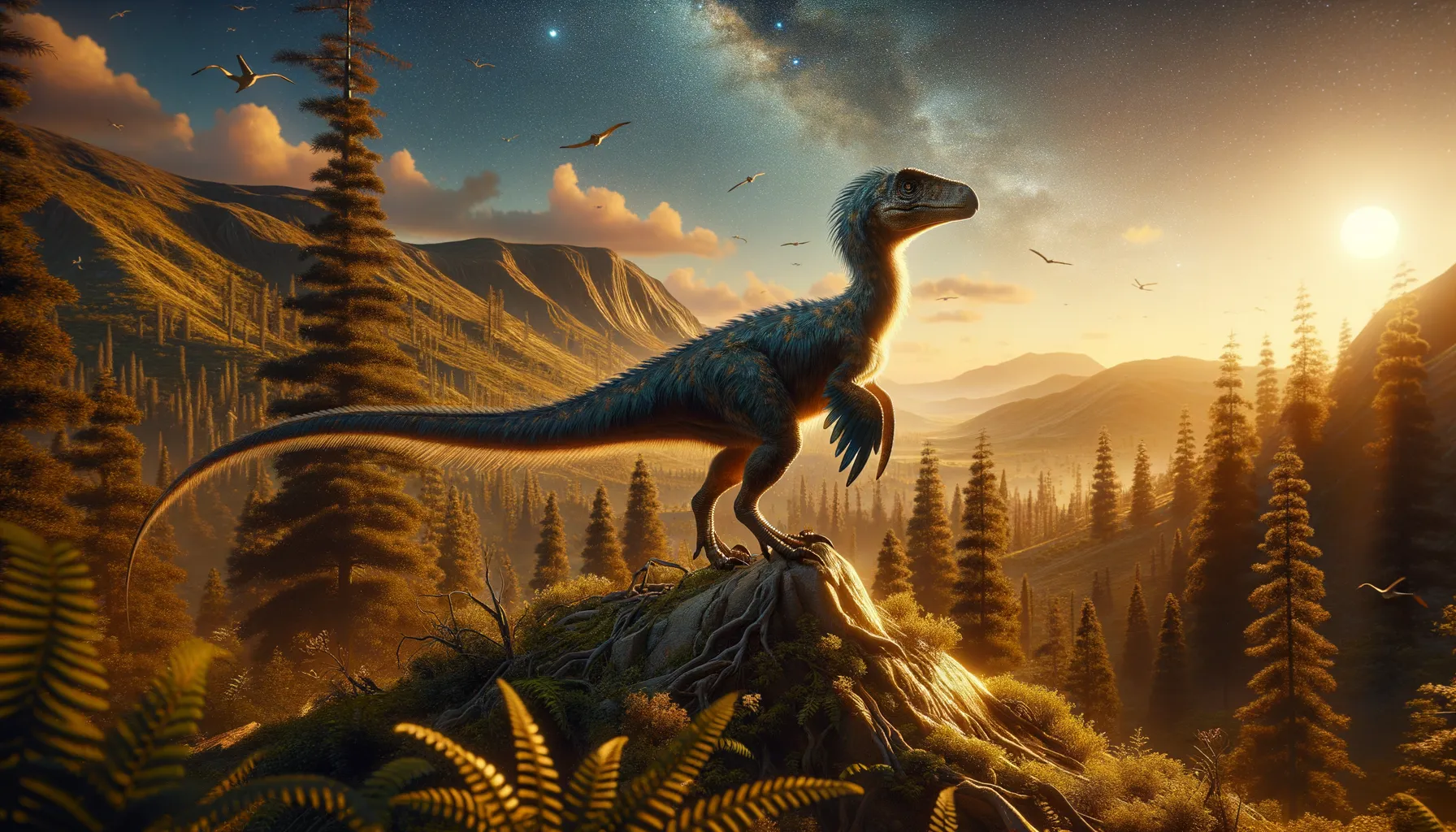
Sinosauropteryx
Feathery pioneer of ancient Cretaceous lands.
Period
Cretaceous
Length
Roughly 1 meter long.
Height
Around 30 centimeters at the hip.
Weight
Approximately 2.5 kilograms.
Sinosauropteryx was a small, feathered dinosaur that lived during the early Cretaceous period. Its discovery was significant because it provided some of the first evidence that dinosaurs had feathers. Known for its elongated body and tail, Sinosauropteryx had primitive feathers that indicated a close evolutionary relationship to modern birds. Its fossils provide key insights into the appearance and lifestyle of small theropods from this era.
Diet
Sinosauropteryx was a carnivore, likely feeding on small mammals, reptiles, and insects. Its sharp teeth were well-suited for catching and consuming small prey, indicative of its opportunistic hunting strategy.
Hunting
It hunted alone, using its speed and agility to catch quick-moving prey. Its keen senses likely helped it detect small animals in its environment, making it an effective predator despite its small size.
Environmental challenges
Living in a time of shifting climates and landscapes, Sinosauropteryx had to adapt to changes in vegetation and prey availability. The volcanic activity in its region posed a significant threat, with periodic ash falls potentially disrupting the ecosystem. Competition from other small carnivorous dinosaurs was also a constant challenge, requiring it to be both a skilled hunter and a cautious evader of predators.
Speed
It was likely a fast runner due to its lightweight structure.
Lifespan
Estimated to be up to 10 years in the wild.
First discovery
First discovered in the Liaoning Province of China in 1996.
Fun Facts
- Sinosauropteryx was discovered in China in 1996 and was one of the first non-avian dinosaurs found with evidence of feathers.
- It was a small dinosaur, about the size of a modern-day chicken, making it one of the smaller theropods known to science.
- Sinosauropteryx had a long tail, which was about twice the length of its body and likely helped with balance and agility.
- The feathers of Sinosauropteryx were not used for flight but possibly for insulation or display, suggesting an early stage of feather evolution.
- Studies of its preserved pigments suggest that Sinosauropteryx might have had a reddish-brown color with a striped tail, similar to a raccoon.
- Unlike many other carnivorous dinosaurs, Sinosauropteryx had teeth suitable for catching small prey, indicating a diet that possibly included insects and small vertebrates.
- Its discovery was crucial in the understanding of the link between dinosaurs and birds, highlighting the evolutionary transition to feathered creatures.
Growth and Development
Sinosauropteryx hatched from eggs, going through rapid growth in its early life to reach adult size. The development of feathers in juveniles suggests an early display of its distinct plumage, which played a role in temperature regulation. As they matured, their agility improved, enhancing their hunting capabilities and survivability.
Habitat
This dinosaur inhabited lush, forested areas and open plains, where it could take advantage of varied prey species. Its environment was rich in ferns and coniferous plants, providing ample cover and hunting grounds. Seasonal variations would have necessitated movement between different locales to access resources.
Interaction with other species
Sinosauropteryx interacted with a range of other species, both as competitors and prey. It faced threats from larger predators and needed to stay vigilant to avoid becoming part of the food chain. The existence of mixed feeding grounds meant that it often foraged alongside herbivorous dinosaurs, each benefiting from the other's presence.
Natural lifespan
Sinosauropteryx's natural lifespan was likely dominated by environmental conditions and predation risks.
Reproduction
Reproduction involved laying eggs, similar to modern birds. Nesting behaviors can be inferred as having some form of protection or concealment to safeguard eggs from predators. The feathered covering could have been used by parents for brooding, possibly indicating some level of parental care.
Social behaviour
While evidence for its social behavior is limited, it may have lived solitary or in loose-knit groups. Its hunting style supports a more independent lifestyle, but there might have been social aspects to nesting or juvenile development, where groups could offer safety in numbers.
Fossil locations
The primary fossils of Sinosauropteryx have been found in the Yixian Formation in Liaoning Province, China. This locality is part of the famous Jehol Biota, known for preserving a diversity of Cretaceous organisms. The exceptional preservation of its feathers helped redefine our understanding of theropod dinosaurs.
